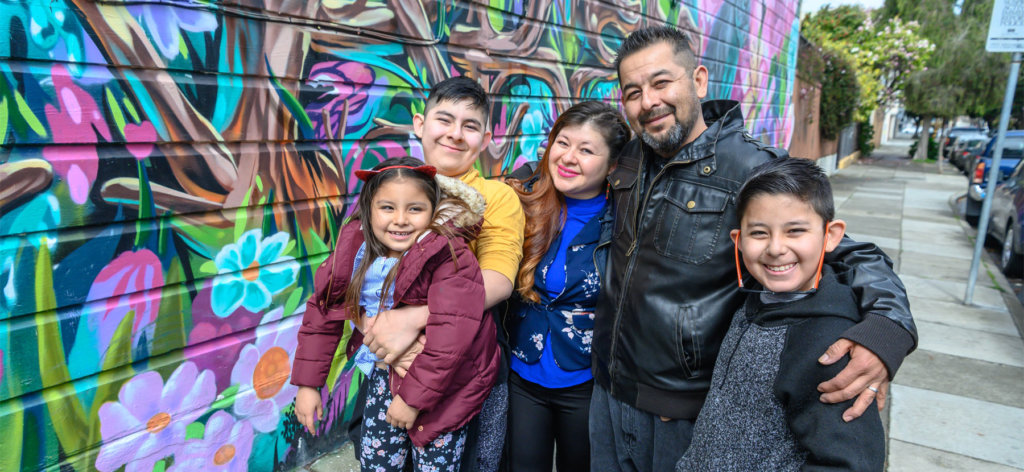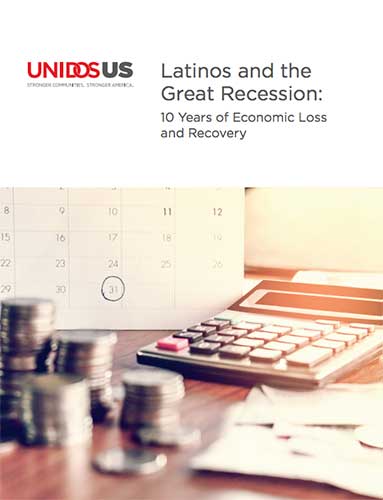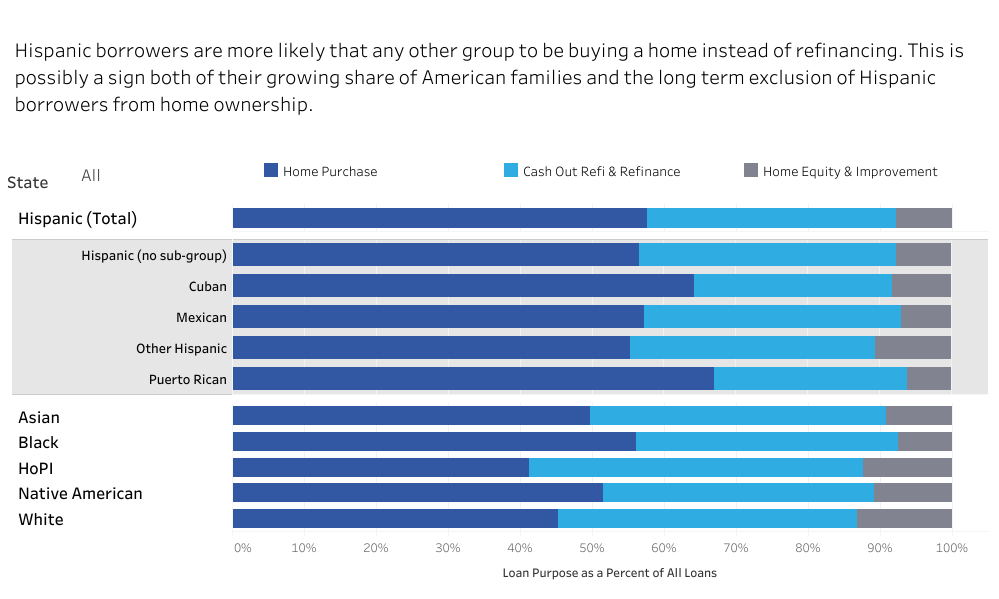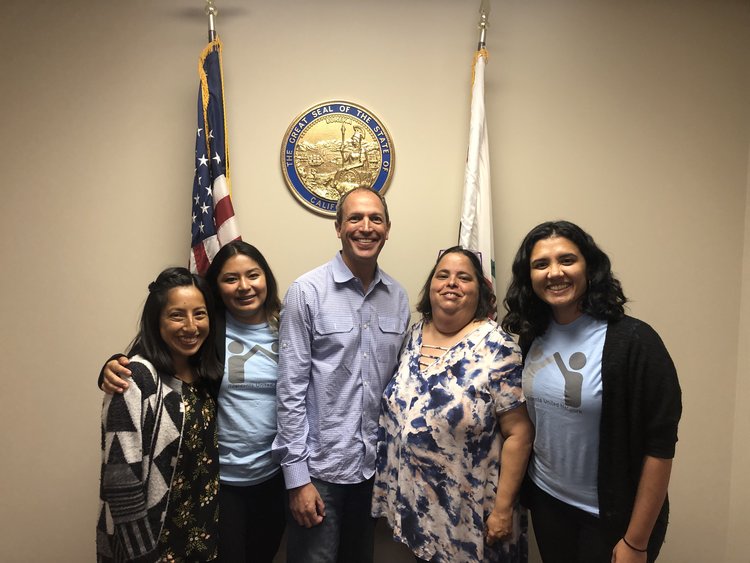How UnidosUS Affiliate Mission Economic Development Agency fights rising housing costs in San Francisco
By Stephanie Presch, Content Specialist, UnidosUS

For five decades, the Mission District in San Francisco was a historically Latino neighborhood. It was considered a hub for the immigrant community, where newcomers could speak Spanish and shop at Latino-owned stores as they started their new lives in California.
However, over the past decade, an increasing number of Latinos and immigrants in the Mission have been forced to move, displaced from their longtime neighborhood by rapidly rising housing costs.
Keep up with the latest from UnidosUS
Sign up for the weekly UnidosUS Action Network newsletter delivered every Thursday.
One of the organizations dealing with this crisis of displacement is Mission Economic Development Agency (MEDA), an UnidosUS Affiliate located in the Mission District and our 2019 Affiliate of the Year.
MEDA has been a direct service provider since 1973, mostly working to help members of the community bundle small loans and build long-term assets for themselves and their families. However, the current displacement crisis has shown the organization the importance of immediate and short-term action.
A crisis of affordability
The crisis of affordability that the city has been experiencing has not let up. Even though San Francisco is a city with a 2.5% unemployment rate, companies are struggling to attract new employees to the area due in part to the high cost of housing.

“With a median price of over $1 million, even if they’re making $175k, they’re not easily going to be able to buy a house,” says Christopher Gil, Associate Director of Marketing and Communications at MEDA. He adds that to buy a house at market price in the area, it would most likely take two earners in a household making at around $175,000 each.
Other coastal cities have had similar problems over the past few years. San Francisco in particular has added 50,000 new residents in just five years, the 49-square-mile city increasing from a population of 830,000 to 880,000. Additionally, because of the hills in the area and limits on building height to preserve neighborhood character, there are added challenges when it comes to preserving affordable homes for longtime members of the neighborhood.
Rent-controlled one day, high-priced condo the next
As part of their housing work, MEDA conducts first-time homebuyer workshops—one in English and one in Spanish—so that they can ensure that they are keeping the information culturally relevant for all members of the community.
“People come to MEDA, and our Housing Opportunities team will guide them through the process, from start to finish. These coaches help community members understand options for how they can make this possible in San Francisco. This includes city lotteries for below-market-rate opportunities and Down Payment Assistance Loan Program (DALP),” Gil explains. MEDA’s housing counseling program receives training and technical assistance from UnidosUS.
One of the challenges that the community is facing in the Mission District is that landlords of rent-controlled buildings are allowed to take the buildings they own off the rental market and sell them as condos.
This is legal under a 1985 California state law known as the Ellis Act, which allows landlords to evict tenants when they want to “leave the business of rental housing.”
Suddenly, renters who had lived in rent-controlled buildings find themselves out in the open rental market. Tenants technically have the right to purchase their apartments back from their landlords, but it’s an unlikely scenario in reality.
“They have the right to buy, but it is highly unlikely that these low- and moderate-income families can make the numbers work to be able to buy,” Gil says.
An affordable housing developer
This housing crisis has driven MEDA to become a local affordable housing developer. They currently have five developments in the pipeline—they’ve broken ground on three of them already—all of which will be finished by 2021. That’s 557 units, in addition to the 23 apartment buildings and 183 units that they already own via the City’s Small Sites Program.
Each of the new developments has a different focus. For example, one building will provide housing to seniors, many of whom were formerly homeless. Another will provide condos at below market-rate prices.
There were tears of joy for a close-knit #MissionSF family of three when they moved into their new home — a below-market-rate (BMR) apartment in a MEDA-owned City of San Francisco Small Sites Program property at Mission and 17th streets. Story @ https://t.co/PXX6sWyivl. pic.twitter.com/2bZPJTXpeG
— medasf (@medasf) May 8, 2019
One of the clients that Gil recalls is Alyssa, a mother of twin girls. When Alyssa arrived at MEDA, she and her children were living in a garage space in the district.
Alyssa was trying to find a below-market-rate apartment, which would allow her to keep living in the Mission District, where she happened to have grown up. Fortunately, she ended up winning a lottery to get into one of MEDA’s vacant Small Sites Program units. Her daughters now have their own space, but she still dreams of taking that next step to own a home.
“She’s very determined to become a first-time homebuyer in the Mission,” Gil says.
Different forms of displacement
Alyssa’s ability to stay in the neighborhood was hard-won, but luck also played a part. For many people who grew up in the Mission, particularly from the Latino community, being forced to move was the norm. In fact, reports estimate that 8,000 Latinos have been displaced from the Mission over the course of the past decade. That’s more than 25% of the local Latino community.
Further complicating MEDA’s efforts to keep people in the neighborhood is the fact that displacement is happening on multiple fronts. For example, unlike residential buildings, there is no form of rent control that exists on commercial spaces.
“Once a commercial lease expires, the landlord can raise that rent to whatever they think they can get for it,” Gil says, adding that rents could jump from, for example, $2500/month to $8000/month, making it difficult for a person’s business model to still work in the neighborhood.
To help people keep their businesses in the neighborhood, MEDA has used a number of different tactics, including providing businesses space on the ground floor of their buildings, running an eight-week business development program, and helping business owners with technical assistance and lease negotiations through a grant that was provided by the city.
MEDA is keeping #smallbusinesses in #MissionSF. Read how DJ Lamont of Fingersnaps Media Arts is now teaching locals how to spin in a rehabbed commercial space at one of MEDA’s properties, purchased via San Francisco’s Small Sites Program. Blog @ https://t.co/xyjwNUsi0d. pic.twitter.com/Cwk8gY48vf
— medasf (@medasf) April 29, 2019
To provide capital to those who cannot get assistance from traditional lenders (including ITIN holders), MEDA even started its own Community Development Financial Institution, called Fondo Adelante, which disburses $5,000 to $100,000 small-business loans. In under four years, there have been 85 loans totaling $2.5 million.
MEDA also rents affordable nonprofit office space at its Mission neighborhood center, Plaza Adelante, including a microbusiness incubator, which provides an opportunity for MEDA business clients to get their ventures off the ground. This microbusiness incubator comprises six small businesses and three 100-square-foot restaurant stalls.
This is having a positive impact throughout the neighborhood. Dance Mission Theater, a local performing arts group that’s been in the District since 1984, will be losing their longtime home. MEDA has ensured that they will have a space in a 200-seat theater in one of their new constructions.
Gil sees keeping these organizations in the neighborhood as key for many of the district’s Latino and immigrant residents. “Our families require the culturally relevant services that have always been a network of support in this neighborhood,” Gil explains. MEDA calls this practice “cultural placekeeping.”
In his time in the Mission and at MEDA, Gil has observed that many families live in cramped conditions. It’s not uncommon for two families to share a two-room apartment. Gil says that people in the District often accept these challenging living conditions to be able to stay in the neighborhood, because that’s where their entire lives were built.
“Even the people who leave this neighborhood still come back to shop, they still have their bank here. Latinos identify with the Mission,” Gil adds.
Related Content
Mission Adelante
Recently, MEDA started a 501(c)(4) called Mission Adelante, which has the ability to engage in lobbying and endorse political candidates. Gil highlights their work as another component of their affordable housing and asset building strategy.
“The last mayoral election in San Francisco was won by 2,000 votes—we could have swung that election,” Gil adds. Having the 501(c)4 allows MEDA to get involved in the political process. By opposing or endorsing candidates, the community will know who has their best interests in mind.
This 360-approach to the issue of affordable housing—although partially borne out of a crisis—is one that Gil believes could help cities across the country that are grappling with similar problems in terms of displacement and maintaining communities’ access to affordable homes.
“Although maintaining affordability in cities as expensive as San Francisco seems daunting, the fact that MEDA has made headway and has devised tried-and-true, replicable solutions for providing affordable homes shows that it is possible to make progress on this issue anywhere in the nation experiencing gentrification. If we can reverse displacement trends in the Mission and stabilize the neighborhood so that everyone still has a place at the table, that model can be exported,” Gil says.
“The work of UnidosUS Affiliates like MEDA is vital to sustaining vibrant, diverse communities where all can strive for their share of the American Dream,” says Agatha So, Policy Analyst at UnidosUS.
“The reality is that too many U.S. households cannot find rental housing that they can afford. In 2015, nearly 40 million American families spent more than 30% of their income on housing. This is a huge problem for young households of color, especially for Latinos. At UnidosUS, we support policies and programs that can make housing opportunities more affordable, such as the establishment of a dedicated fund to construct more affordable rental housing and increased federal investments in housing, like the Federal Housing Trust Fund,” So adds.



